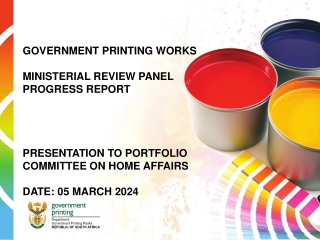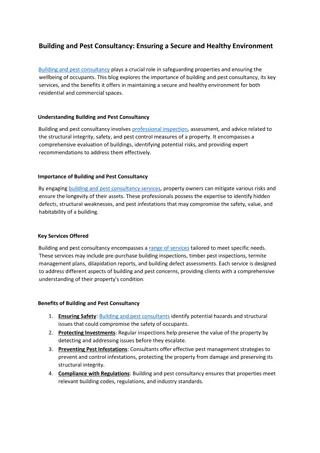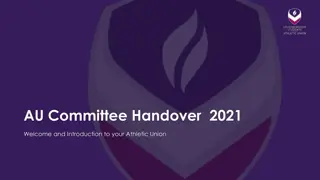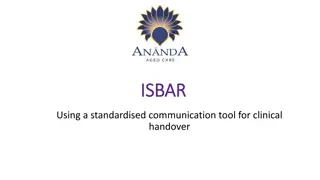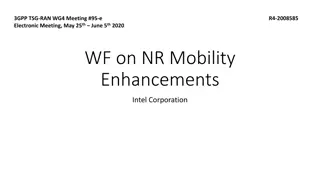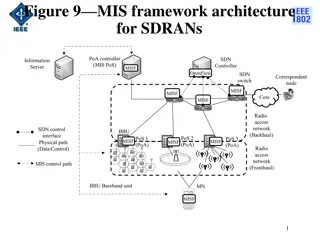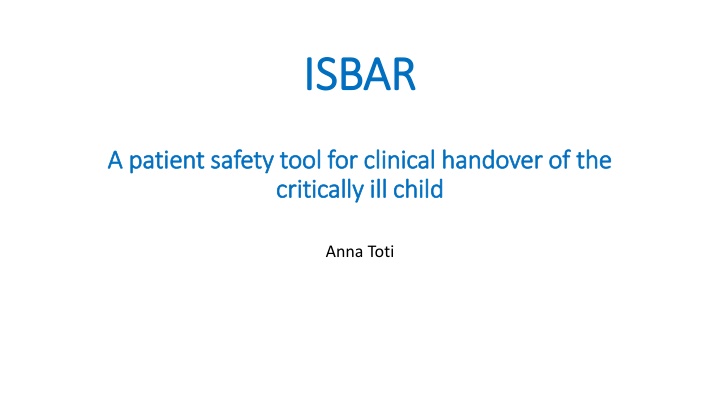
Enhancing Clinical Handover with ISBAR Tool for Patient Safety
ISBAR is a structured communication tool used for clinical handover of critically ill patients, ensuring concise transfer of essential patient information between healthcare professionals. Originally derived from SBAR and introduced into healthcare in 2002, ISBAR reduces communication errors and improves patient outcomes by following a systematic approach in conveying patient details and needs.
Download Presentation

Please find below an Image/Link to download the presentation.
The content on the website is provided AS IS for your information and personal use only. It may not be sold, licensed, or shared on other websites without obtaining consent from the author. If you encounter any issues during the download, it is possible that the publisher has removed the file from their server.
You are allowed to download the files provided on this website for personal or commercial use, subject to the condition that they are used lawfully. All files are the property of their respective owners.
The content on the website is provided AS IS for your information and personal use only. It may not be sold, licensed, or shared on other websites without obtaining consent from the author.
E N D
Presentation Transcript
ISBAR ISBAR A patient safety tool for clinical handover of the A patient safety tool for clinical handover of the critically ill child critically ill child Anna Toti
Communication relating to patient care Communication relating to patient care Requires concise transfer of patient clinical information Occurs between health care professionals with different specialties, levels of experience and communication styles A standardised tool needed for communication of all the important aspects of patient information and needs
ISBAR ISBAR Started off as SBAR used by US military then in aviation industry Communication tool introduced into health care c.2002 Now widely recommended in health care communication Provides a structured way to handover a patient Each step calls for action Reduces communication errors that lead to negative patient outcomes
Specify: I Yourself, your role and location to: The colleague/team you are handing over to Patient s parent or guardian IDENTIFY Patient name, age, gender and ward or department
State: S The current clinical situation Changes in patient s condition Scores or measurements taken Vital signs or NEWS GCS SITUATION Relevant bedside or lab test results Risks or concerns you may have
Briefly outline: B Admission details Presenting complaint Relevant clinical history and diagnosis BACKGROUND Allergies and previous illness of significance Interventions to date
State clearly: A Your clinical opinion of patient s current status ABCDEFGHI assessment ASSESSMENT Ongoing concerns Patient instability what has been or needs to be done to stabilise
Briefly: R Recommend management plan with rationale Request specific advice, interventions RECOMMENDATION Clarify expectations Close the loop of communication
Clinical context Clinical context Morning meeting team hand over On call hand over ICU/PICU/HDU/PCC unit ward rounds CED to main wards Post anaesthesia/Paediatric surgical procedure Inter ward transfers Referral to hospital


